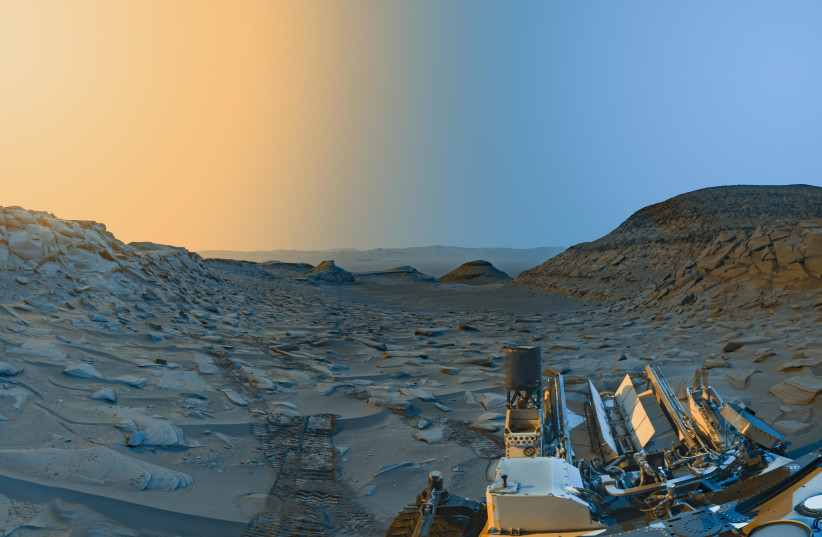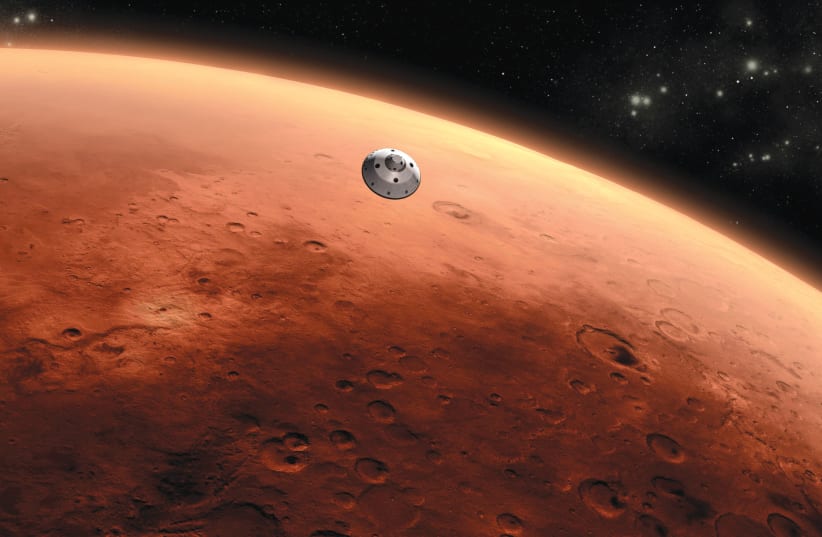A recent study utilizing data collected by NASA's Mars Perseverance rover has revealed promising indications of organic molecules on Mars, suggesting a complex organic geochemical cycle and raising the possibility of prolonged habitability.
The research employed an innovative technique utilizing the Scanning Habitable Environments with Raman and Luminescence for Organics and Chemicals (SHERLOC) instrument to detect signs of past life, paving the way for future extraterrestrial exploration.
The peer-reviewed study, published in the journal Nature, showcases the work of a team of scientists, including astrobiologist Amy Williams from the University of Florida, who spearheaded the investigation.
While previous missions have contributed valuable insights, the quest for organic carbon on Mars has been a driving force for scientists. The latest findings shed new light on our understanding of the Red Planet, hinting at the existence of multiple reservoirs of potential organic compounds and a more intricate organic geochemical cycle.
Significantly, the study identified signals consistent with molecules associated with aqueous processes, suggesting that water may have played a crucial role in the diverse range of organic matter on Mars.

The presence of essential building blocks for life may have endured for a longer duration than previously imagined.
Amy Williams, an esteemed expert in organic geochemistry, has been at the forefront of the search for life's fundamental elements on Mars.
Identifying habitable environments
As a key participant in the Perseverance mission, Williams focuses on identifying habitable environments, searching for potential life-sustaining materials and unearthing evidence of past life on the Red Planet.
The retrieval of on-site samples collected by Perseverance in future missions will be a complex and ambitious endeavor spanning several years.
"The potential detection of various organic carbon species on Mars has significant implications for understanding the planet's carbon cycle and its capacity to support life throughout its history," explained Williams, an assistant professor in UF's Department of Geological Sciences.
Organic matter can be formed through various processes, not exclusively those associated with life. Geological processes and chemical reactions can also give rise to organic molecules and these possibilities will be further investigated by Williams and her team of scientists.
Until now, organic carbon had been detected solely by the Mars Phoenix lander and the Mars Curiosity rover, utilizing advanced techniques such as evolved gas analysis and gas chromatography-mass spectrometry.
The latest study introduces a different technique capable of potentially identifying simple organic compounds on Mars.
The selection of the Jezero crater as the rover's landing site holds great promise for past habitability. As an ancient lake basin, it harbors an array of minerals, including carbonates, clays and sulfates, which have the potential to preserve organic materials and potential signs of ancient life.
"We didn't initially anticipate detecting these potential organic signatures in the Jezero crater floor," Williams remarked. "However, their diversity and distribution across different units of the crater floor now suggest potentially distinct carbon fates within these environments."
To map the distribution of organic molecules and minerals on rock surfaces, scientists employed a groundbreaking instrument known as the SHERLOC.
SHERLOC employs deep ultraviolet Raman and fluorescence spectroscopy to simultaneously measure weak Raman scattering and strong fluorescence emissions, providing invaluable insights into Mars' organic composition.
"We have barely scratched the surface of the organic carbon story on Mars," Williams enthused, "and this is an exhilarating time for planetary science!"
